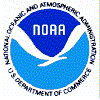 ®
® ®
®Geospatial connotes the distribution of something in a geographic sense; it refers to entities that can be located by some co-ordinate system. The three terms "feature; object; class" have different but somewhat overlapping meanings. Feature can refer to "overall appearance", "mark", or "characteristic", and/or to a set of measurable properties, or, more narrowly, to a specific geometric or geomorphic entity on the surface of a planet such as Earth. Object relates to a single entity, of a physical nature, capable of being sensed (e.g., seen or touched), to which a descriptive name can be given, such as "house", "road". Class has a more general connotation, pointing to a group of features or objects of identical or similar types that have taxonomic significance; examples are "forest"; "urban"; "mountains". Classes can be hierarchical, that is, can be subdivided into subclasses; thus "urban" includes "inner city/suburbia", road networks", "neighborhoods", "shopping centers", etc. The term "theme" is often interchangeable with "class".
Or, try this variation: Applied terrestrial Remote Sensing involves the detecting and measuring of electromagnetic energy (usually photons) emanating from distant objects made of various materials, so that the user can identify and categorize these objects by class or type, substance, and spatial distribution. Generally, this more conventional description of remote sensing has a specific criterion by which its products point to this specific use of the term: images much like photos are a main output of the sensed surfaces of the objects of interest. However, the data often can also be shown as "maps" and to a lesser extent "graphs", and in this regard are like the common data displays resulting from geophysical remote sensing. As applied to meteorological remote sensing, both images (e.g., clouds) and maps (e.g., temperature variations) can result; atmospheric studies (especially of the gases in the air, and their properties) can be claimed by both traditionalists and geophysicists
In the general term "geophysics". This would take in such geophysical methods as seismic, magnetic, gravitational, acoustical, and nuclear decay radiation surveys. Magnetic and gravitational measurements respond to variations in field forces, so these can be carried out from satellites. Remote sensing, as defined in this context, would be a subset within the branch of science known as Geophysics. However, practitioners of remote sensing, in its narrower meaning, tend to exclude these other areas of geophysics from their understanding of the meaning implicit in the term.
Still, space systems - mostly on satellites - have made enormous contributions to regional and global geophysical surveys. This is because it is very difficult and costly to conduct ground and aerial surveys over large areas and then to coordinate the individual surveys by joining them together. To obtain coherent gravity and magnetic data sets on a world scale, operating from the global perspective afforded by orbiting satellites is the only reasonable alternate way to provide total coverage.